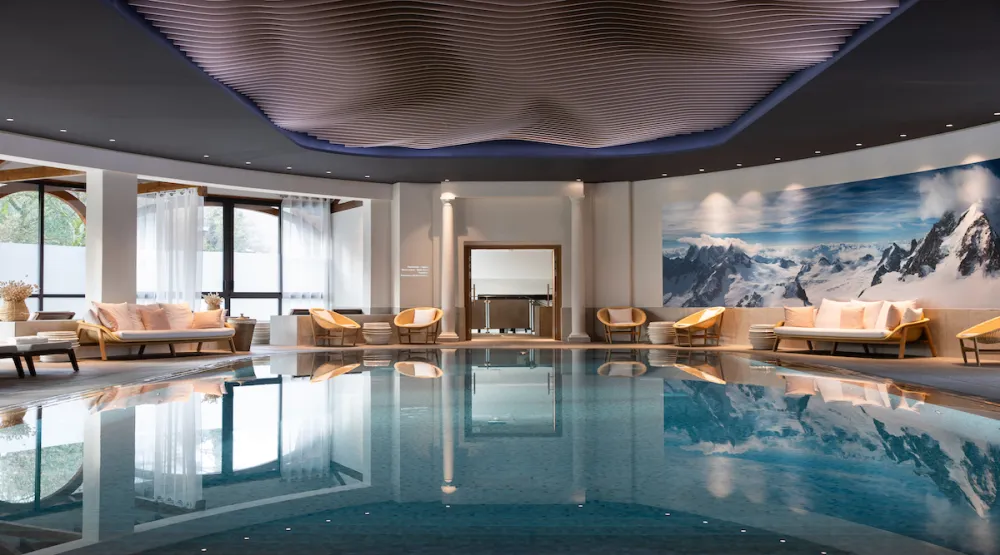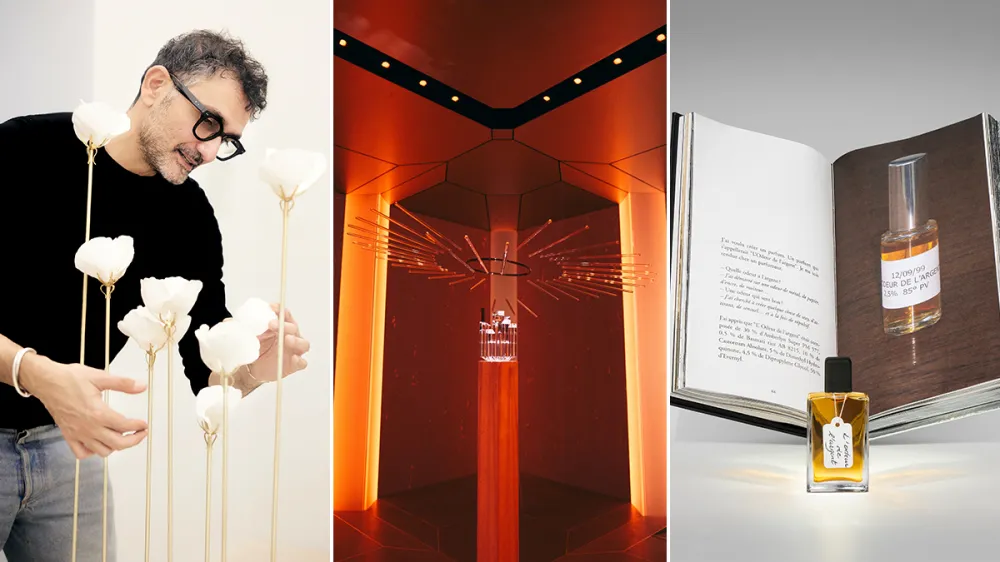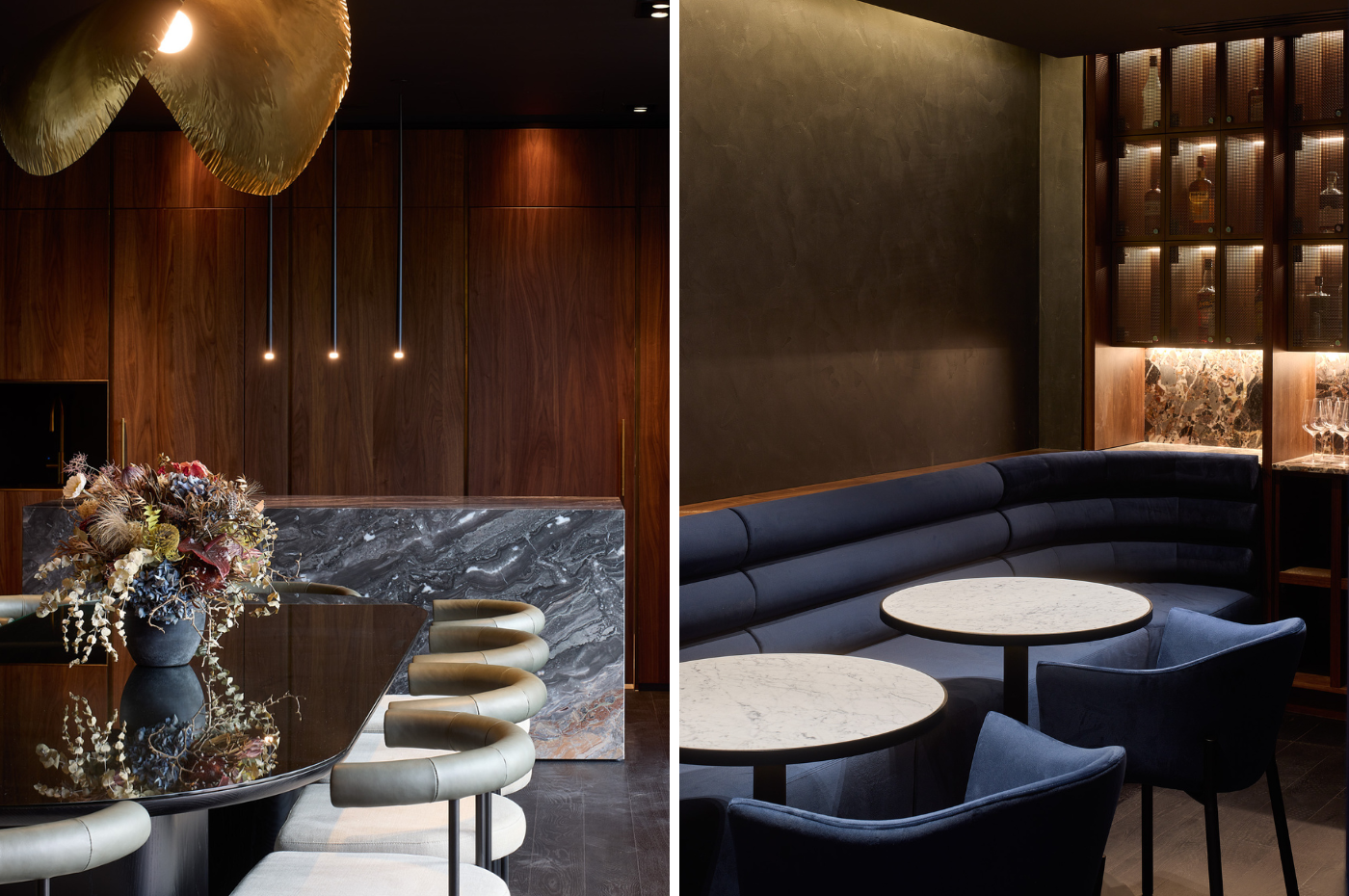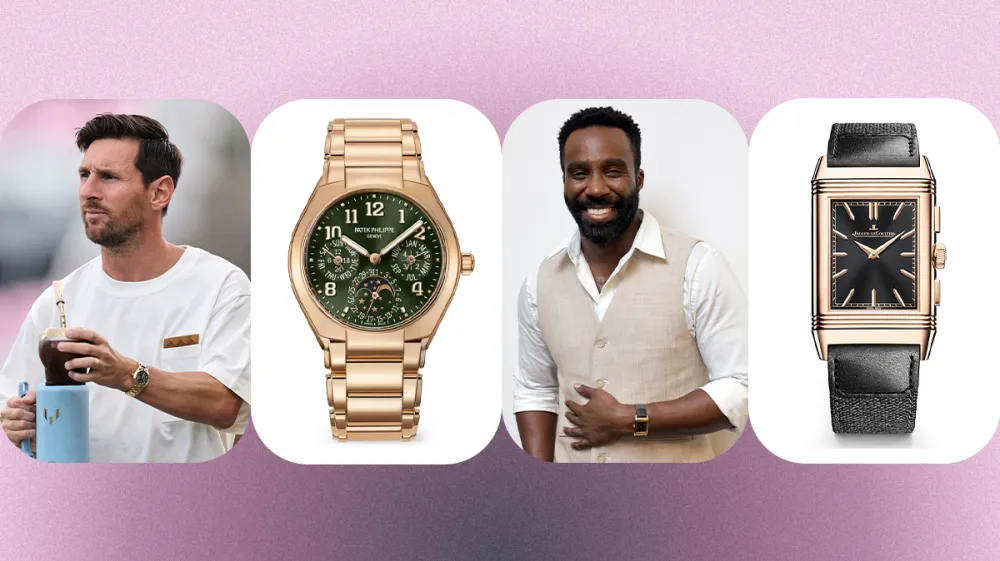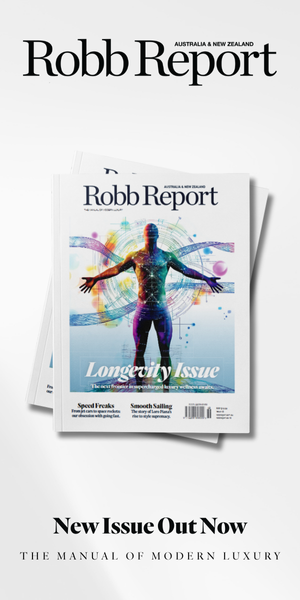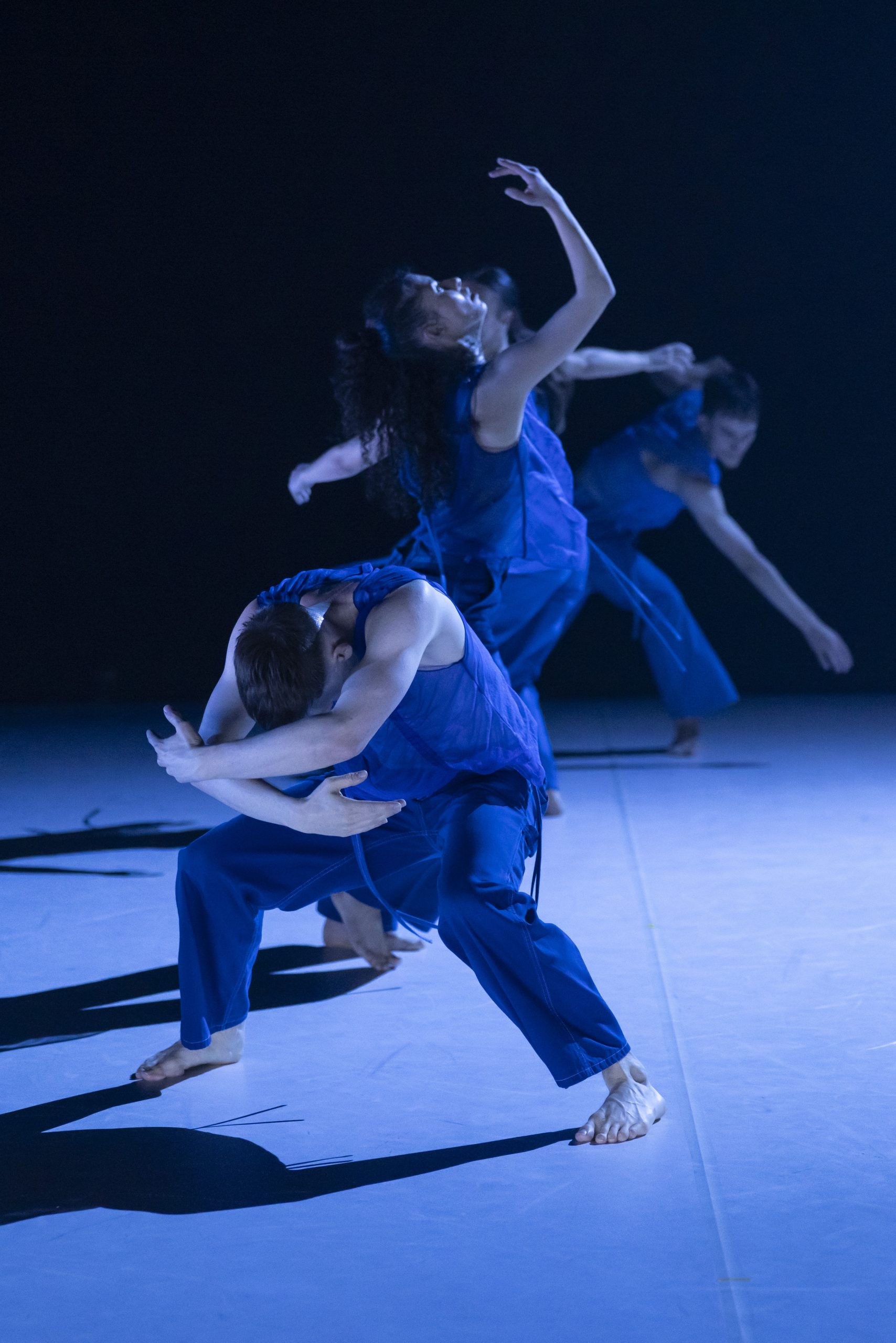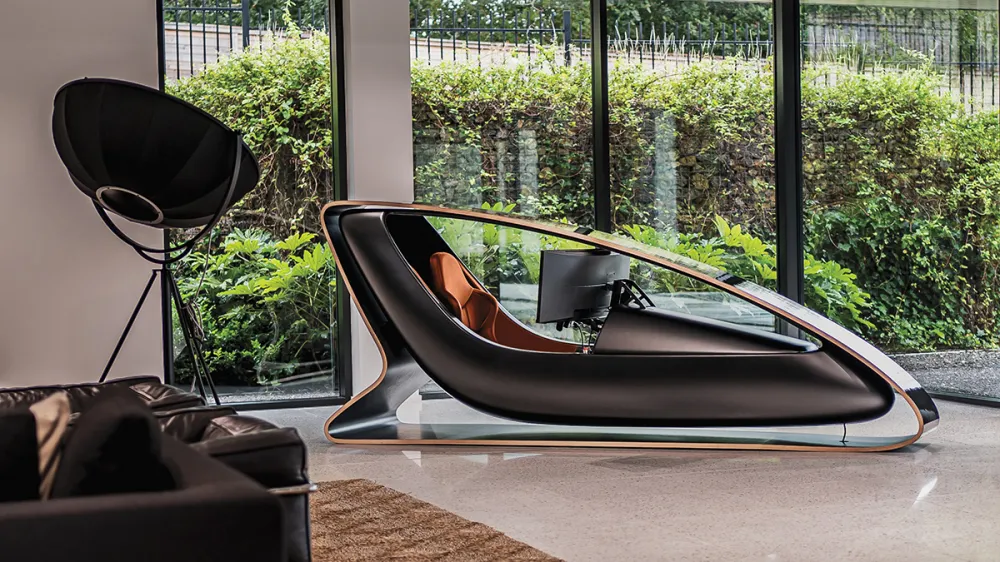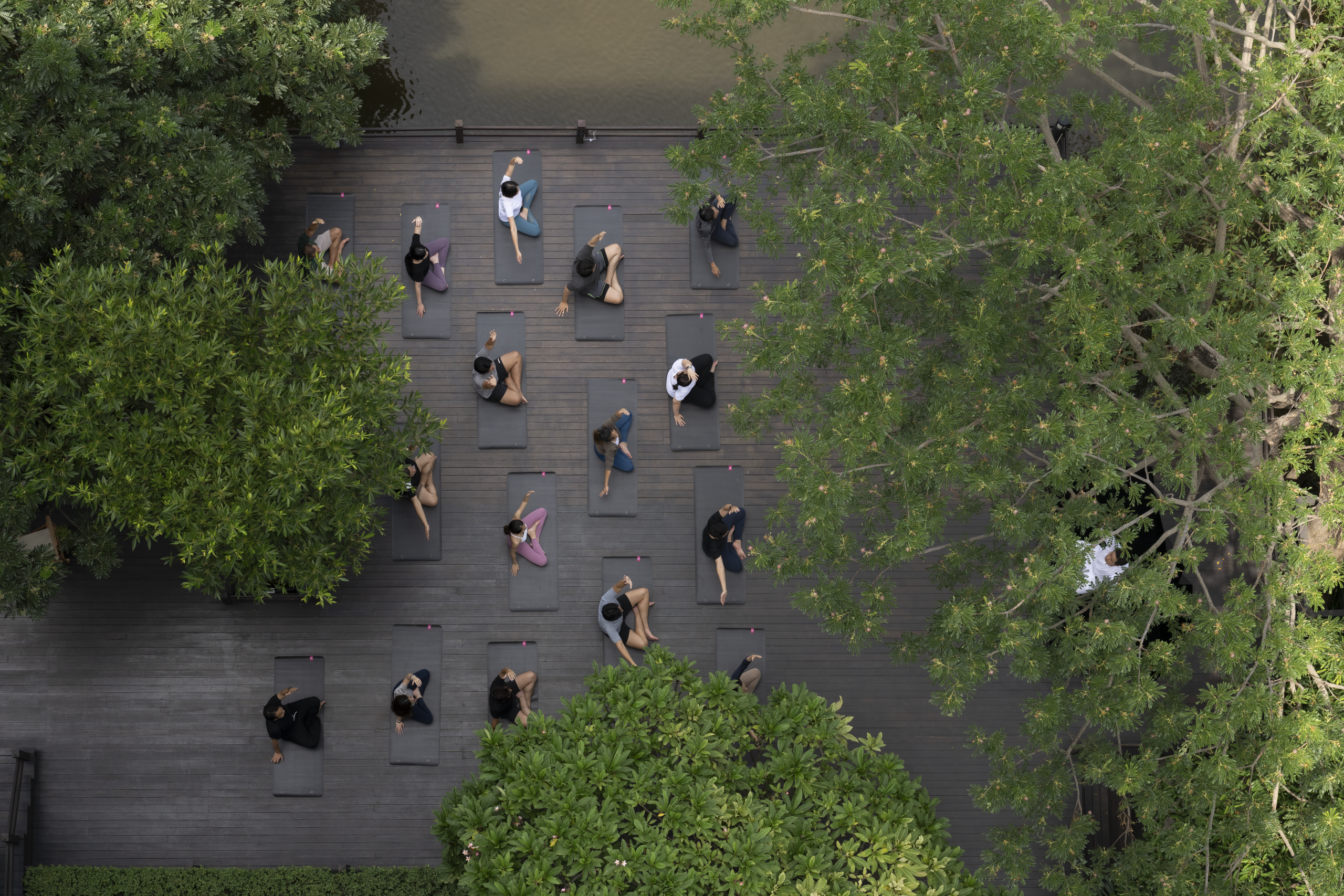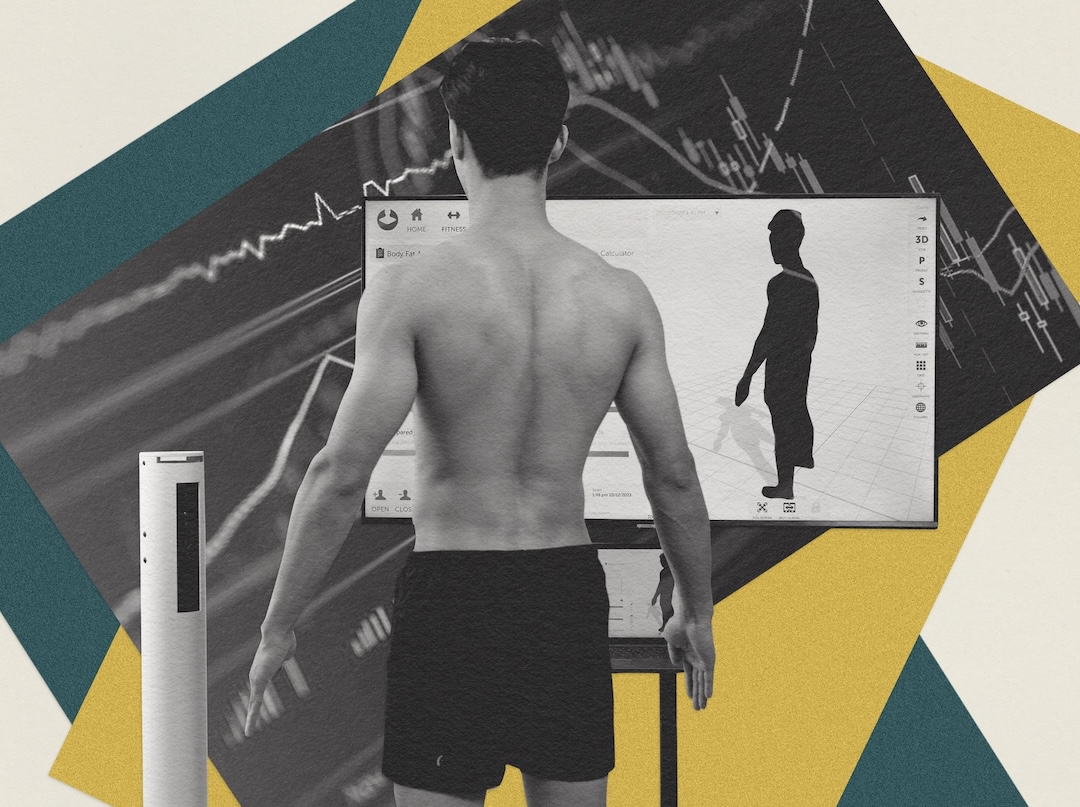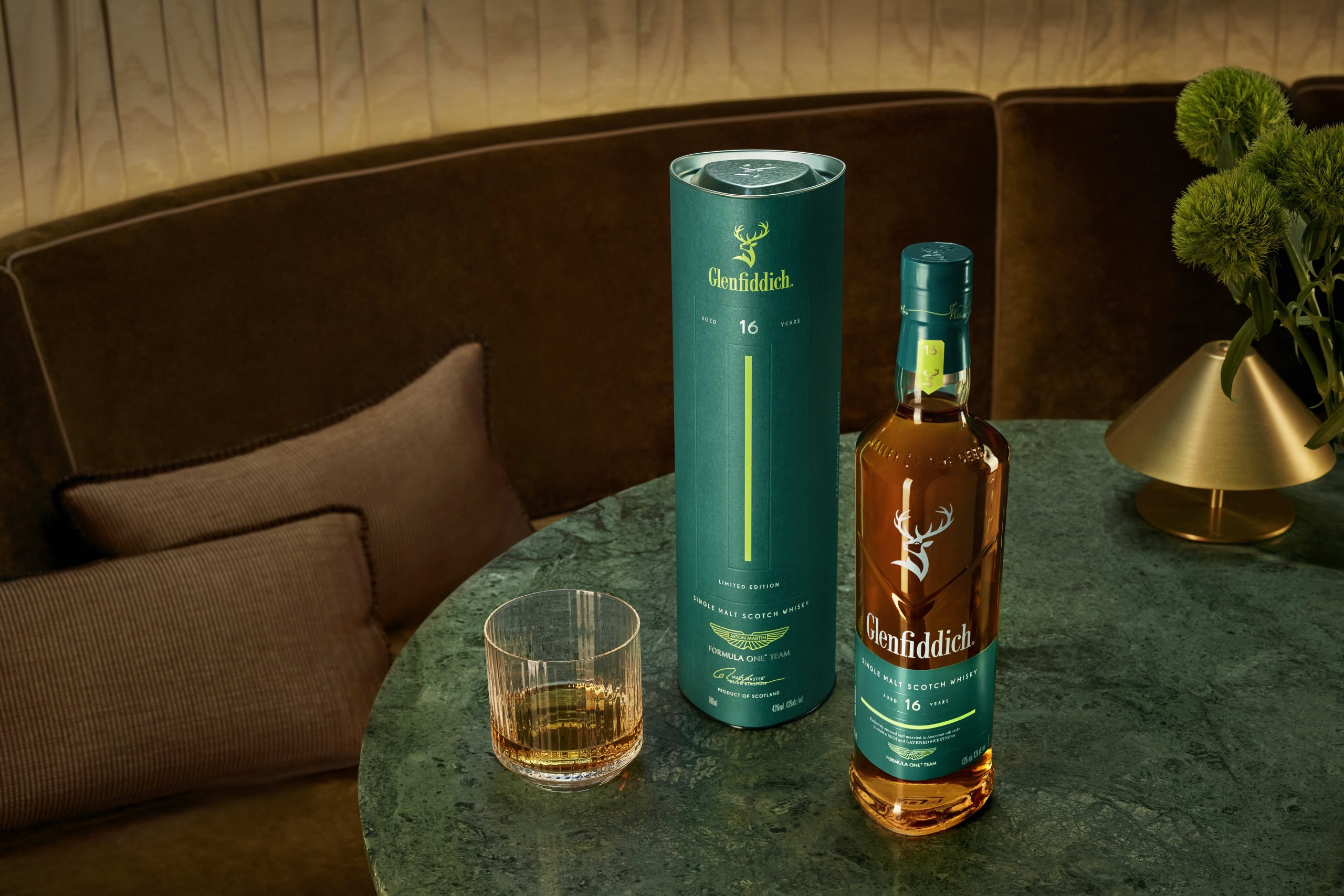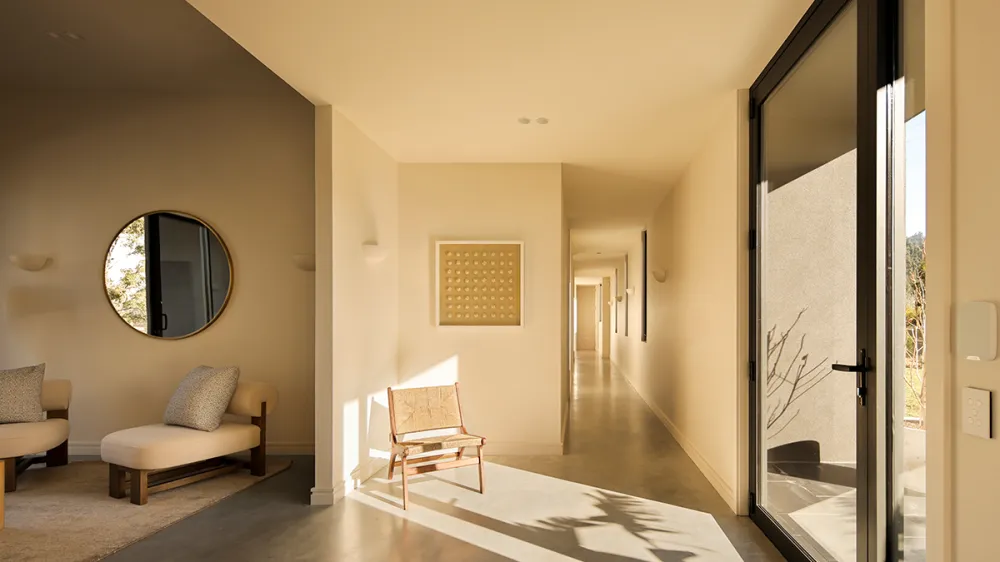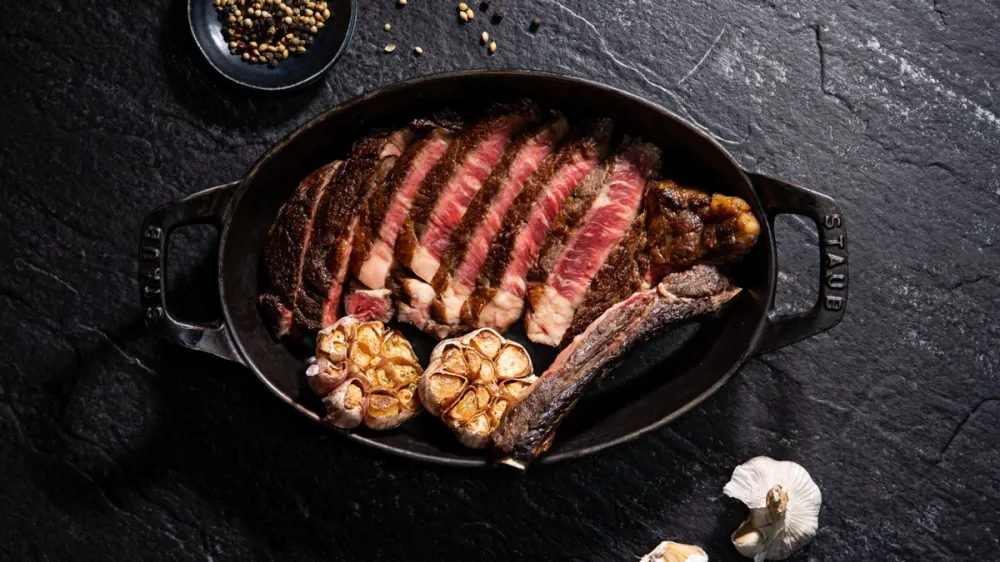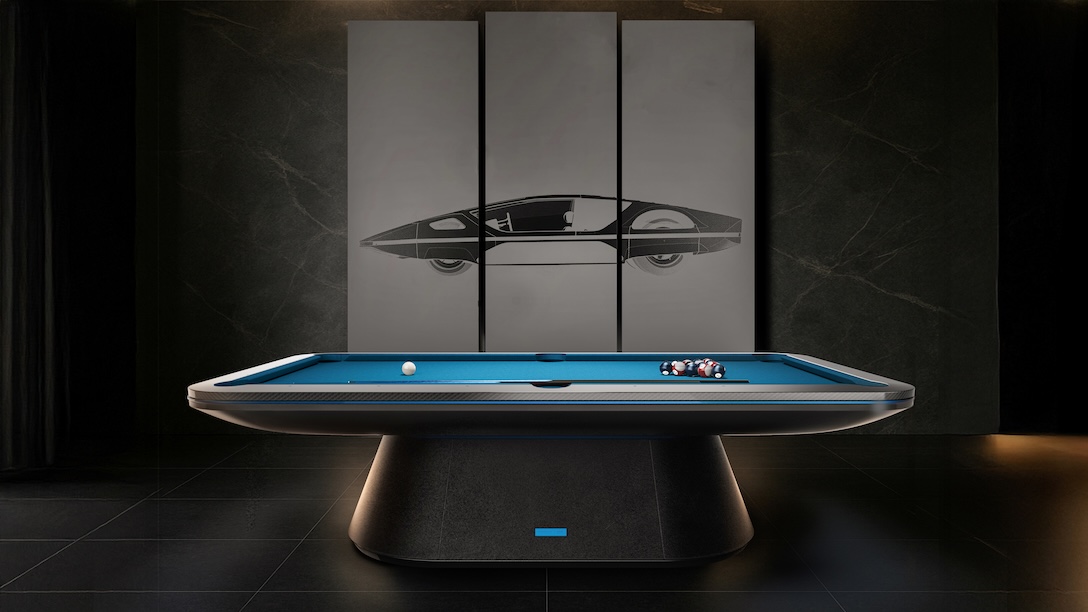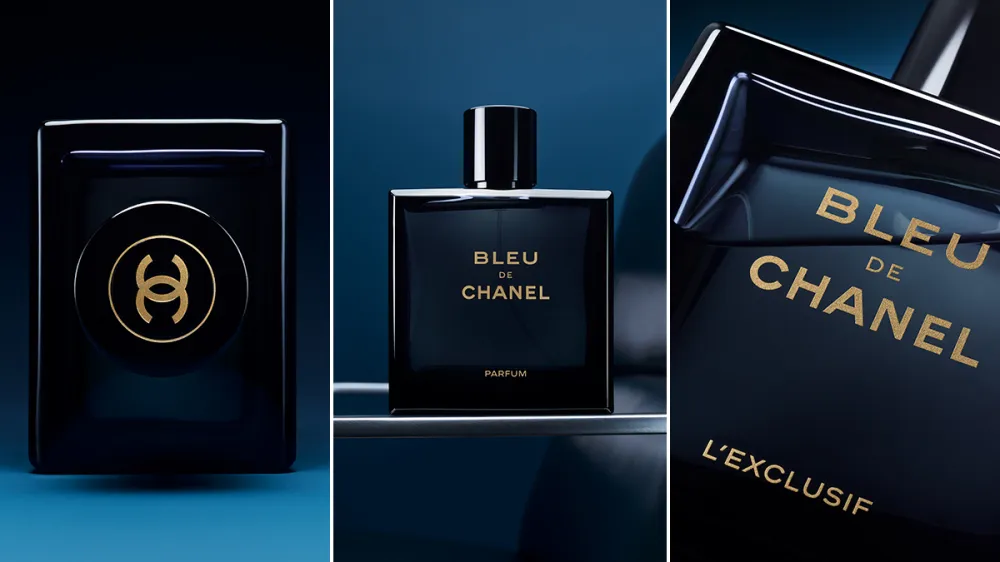
Ride of Your Life
What could be better than a luxury cycling trip on a sultry Mediterranean island. One where your biggest hero in the sport is right alongside you.
Related articles
It’s a balmy afternoon, and I’m riding my bike around an idyllic island in the Mediterranean. I keep glancing at the cyclist next to me—partly to make conversation but also to check that he’s really Geraint Thomas, winner of two Olympic gold medals, three world championships and a Tour de France. I can’t quite believe my luck: I’m wheel to wheel with one of the sport’s greatest living athletes, and to top it off, he has a bruising hangover, enabling me to keep pace with him as if I were a pro. And yet, this extraordinary experience was not that hard to achieve.
Want to shoot hoops with Stephen Curry, have a kickabout with Lionel Messi or face a few fast bowls from Pat Cummins? Get ready to write a sizeable cheque. The opportunity to rub shoulders with your sporting heroes—whether as part of a fantasy-camp afternoon or, for truly unfettered access, by buying the teams they play for—comes neither easy nor cheap.

The exception, it seems, is cycling. Consider my recent long weekend on Ibiza with Thomas. I might also have joined Eddy Merckx, the Pelé of cycling and probably the greatest rider ever to have turned a pedal, or six-time Olympic gold medalist Sir Chris Hoy, or any one of a litany of elite athletes who have rolled out side by side with guests on a LeBlanq tour.
Founded by British former pro cyclist–turned-entrepreneur Justin Clarke, LeBlanq aims to provide superior holidays on two wheels and is part of an explosion of start-ups and buyouts in the multibillion-dollar luxury cycling space. It offers around a dozen itineraries each year, in regions with spectacular scenery—such as the Norwegian fjords and the Scottish Highlands—and particularly those with an oenological link, such as Champagne in France, Spain’s Rioja and Constantia Valley in South Africa. On each trip you’re guaranteed at least one titan of the sport, a luxury hotel as accommodation and a wellness program for those in attendance but not cycling. A superstar DJ may headline the post-ride party, and there’s always a celebrity chef providing nutrition more appealing than the vast quantities of rice that pros typically cram down during a race.

Richie Hopson
Before starting LeBlanq in 2020, Clarke built the Taste food festivals, which showcase the work of the best fine dining restaurants in 19 cities around the world (it has since been sold to IMG), and his contacts run as deep in gastronomy as in cycling: Michelin-starred chefs Nathan Outlaw and Angela Hartnett, among many others, have cooked for LeBlanq guests. And here gluttony is justified, with depleted riders needing to fuel up on all that sensational food after burning thousands of calories on the road and in preparation for the following day’s outing. Plus, assuming you don’t have too bad a hangover, alcohol is useful as an extra carbohydrate.
Cycling has always been a democratic, accessible, mass-participation sport. Its recent surge in popularity around the globe has been driven by its health and environmental benefits; and involvement also flourished during Covid shutdowns, when gyms were largely off-limits. The activity is almost unmatched in its ability to let you sustain a high heart rate and burn more calories for long periods, and its metronomic, meditative qualities have been shown to be good for your mental health as well: riding with friends is social; riding alone brings solace. But while the advantages of the sport are universal—and entirely unrelated to the price of your bike—those enthusiasts willing to spend can majorly amplify what can quickly become an addictive and all-consuming pastime. For example, while you can’t buy a current F1 car, you can purchase a bike nearly identical, save a few prototype parts, to that of a Tour de France winner. Or you can engage a custom builder to create a model tailored to your precise dimensions, colour preferences and specifications—like a Savile Row suit, but far more expensive. (An elite commissioned machine can run from around $15,000 to upwards of $40,000.) You can wear stylish cycling gear created by Sir Paul Smith while riding it (the British designer once aspired to compete professionally, before injuries sustained in a major accident derailed those ambitions and he moved into fashion). Beyond LeBlanq’s offerings, you can book other operator’s trips that let you pedal across frozen Mongolian lakes or the game reserves of Botswana’s Okavango Delta.

A recent analyst report estimates that the market for luxury cycling will increase by a third, to around $29 billion, over the next five years. The poster child for this booming sector is luxe clothing brand Rapha, founded in London in 2004; a private equity firm run by Walmart heirs Tom and Steuart Walton, themselves keen cyclists, bought a majority stake in 2017 for about $395 million. Similar deals continue. Last year, mining billionaire Ivan Glasenberg, another devotee, paid an estimated $383 million for controlling interest in high-end Italian bike brand Pinarello, a name as resonant to cyclists as Ferrari and Maserati are to motorists.
Despite the enmity that some (erroneously) perceive between those two tribes, the luxury car marques are eager to be part of the cycling surge: smart brands go where their customers are, and these customers are increasingly out on their bikes. Which explains why Aston Martin and Lotus each launched radical, innovative bikes—costing far more than even Geraint Thomas’s Tour-winning Pinarello—at the Rouleur Live cycling show in London late last year. And why, along with Rapha, Marqués de Riscal wine, Laurent-Perrier Champagne, InchDairnie Distillery and Bianchi bikes, both Aston Martin and Porsche have partnered with LeBlanq to provide the “team” cars that follow each group of riders with supplies and spare bikes.

In my 30 years as a journalist, this was the first time I needed to train for a story. I signed up to ride at LeBlanq’s event on the Spanish island of Ibiza alongside Thomas, who at 37 remains a contender for the great prizes of the sport, having only lost his lead in last year’s Giro d’Italia on the penultimate day. Just before flying to Ibiza, he announced that he would compete on billionaire Sir Jim Ratcliffe’s INEOS Grenadiers team for another two years.
Thomas is a world-class professional athlete performing at the pinnacle of one of the toughest endurance sports. I am, well, not. What on earth was I thinking, agreeing to ride with him? I’m 49. I’ve cycled semi-seriously since I was 12 and was a solid midrange finisher when I competed for a while in my teens; I gave up after realising that racing hurt, and that I was no good at it. Now, even with no trophy or purse at stake, I feared the humiliation of being “dropped”—parlance for getting left behind—not only by Thomas but by the hyper-alpha, ultra-fit bankers and lawyers I imagined to be the clientele at a LeBlanq event.

Andrew Grant
So I trained for three months, shedding more than five kilos and getting my power and pace up slightly. I thought I’d better upgrade my bike, too, so I called German maker Canyon, the Porsche of cycling, whose bikes I’ve owned for years. The Canyon folks saw my predicament, agreed that my eight-year-old model wouldn’t cut it, and instead loaned me an Ultimate CF SL Disc 8.0 Aero. It’s similar to the machine favoured by Thomas’s Tour rivals on the Movistar and Alpecin teams (the Aeroad CFR Di2, priced at about $15,000) and was the Financial Times’s “best race-oriented bike” of ’23, but at around $10,500 costs a lot less than his roughly $23,000 team Pinarello Dogma F. To quote Lance Armstrong, it’s not about the bike, but I figured I should take all the help I could get.
I needn’t have worried. I arrived at the beachfront Hotel Riomar in Santa Eulalia, which LeBlanq had taken over in its entirety, and immediately had the new bike whisked from me and brought to the secure service area, where LeBlanq’s mechanics checked it over, added a race-style plaque with my name and rider number under the seat, and hung it on the racks in the company of what was probably well over a million dollars’ worth of bikes that had been flown in from the US, the Middle East and Europe by the 120 other participants.

Andrew Grant
Inside the hotel I was handed my Rapha x LeBlanq team gear and a bag of energy bars, gels and drinks for the four days of cycling. So far, so pro. But then someone pressed a glass of Laurent-Perrier into my hand, and then someone else topped it up, and I began to realise that for all LeBlanq’s race-ready image, the reality might be a bit more like a fun run through Centennial Park—if you want it to be, anyway.
Riders are split into groups of 10 to 12 each based on ability and likely speed. Each is led by someone very experienced, often an ex-pro, who takes care of the directions and pace, with a support car following. For the short opening jaunt of around 30 km, I decided to roll with the gentlest squad, led by the effervescent former racer Monica Dew, who ensured that the members of her pleasingly mixed group never felt stretched. (The pros trade cohorts over the course of the weekend so everyone gets a moment to bask in their reflected glory.) There were participants of all ages and abilities, some wearing running shoes rather than the clip-in cleats favoured by the more hardcore, and some on battery-assisted e-bikes.

Andrew Grant
A significant part of the appeal of such events is the experience of riding in a peloton. Having others around you deflects headwinds, reducing the effort required to maintain a given speed by up to 40 percent. You find yourself being sucked along by the group, feeling like a pro, going faster than you ever could on your own while comfortably holding a conversation with the person next to you.
And what chats. Wearing the same bib is a great leveller, and the collaborative nature of a group ride means confidences are quickly shared. As well as the expected doctors, executives and pilots, I found myself moving with the founders and funders of tech firms, a world-leading cybersecurity expert, a man my age who’d had a heart attack just a year before, a couple who’d taken a previous LeBlanq trip for their honeymoon, and the arena-filling British DJ Pete Tong, perhaps best known for exporting house music to the world. Another turned out to be Nick Evans, managing partner of private equity firm Active Partners, chairman of Rapha, and the guy who gave luxury cycling its defining moment by brokering that $395 million sale to the Waltons.

The exchanges were so good and the concentration required to keep up in a fast, tight, well-disciplined group so intense that I needed to remind myself to look up and absorb the extraordinary scenery. Ibiza’s rural roads are mostly well surfaced and lightly trafficked. Temperatures in the mid 20s were perfect for cycling, and the air was scented with the pine needles that lay in piles at the edge of the road. There were few serious climbs—just enough to keep things interesting—and they often rewarded with a view over yet another deserted, pine-fringed beach and the azure Mediterranean beyond.
For non-riding partners or those taking a day off, Northern Irish TV sports presenter and former track-and-field athlete Orla Chennaoui had curated a comprehensive wellness program with sunrise yoga sessions, breath-work classes and restorative hikes through the local hinterland. But Ibiza is perhaps better known for the un-wellness programs of its nightlife, and a bit of that attitude permeated the LeBlanq trip, with some very well-lubricated after-ride fetes. My partner, Sophie, not a cyclist and there ostensibly for the yoga, got us on the guest list for the season-closing party at Pikes, Ibiza’s original boutique hotel and still a hedonist’s playground, in whose swimming pool Wham’s “Club Tropicana” video was filmed in 1983. I demurred, extremely reluctantly, as I was due to join a faster group for 160 km with Thomas the next day. My alarm was set for 6:45 a.m., and I didn’t want to wreck three months of training with one night of clubbing.

Richie Hopson
Thomas, however, did not decline. In a later interview with The Times in the UK, he admitted to having been drunk for 12 out of 14 nights during his brief post-season break from racing and training; we were responsible for two of those. He finally rolled back in from Pikes at 5 a.m., and a couple of LeBlanq guests gleefully claimed that they’d not only biked with their hero but shared a drunken dawn cab ride with him.
Despite the colossal respect he commands, he was given an amused, ironic, slow handclap when he appeared well past the start time that morning. But even when you know he has slightly disabled himself, there’s something eerie and disconcerting about standing in your kit astride your bike, ready to set off, when a world champion and Tour de France winner appears dressed in the same INEOS team uniform and those hallmark white shades you’ve watched him wear on television for years. Imagine standing by the side of your local swimming pool, putting on your goggles, and seeing Ian Thorpe appear in the lane next to you.
Again, I needn’t have worried. Usually a very funny, voluble, sometimes indiscreet character, Thomas was unusually quiet in the opening kays, hanging his head over his handlebars every time we stopped. “Oh Ben,” he sighed at one point, “what I did last night… I just don’t know if it was worth it.”
The conversation improved as his hangover cleared. He enjoys the lifestyle of a major sports star—the house in Monaco, fine taste in watches, and a Porsche 911 Turbo his wife bought him as a birthday present—but he remains connected to his Welsh roots and retains a surprising degree of impostor syndrome for a man who has won so much.

“I just take it for granted that I can come along and ride my bike in amazing places,” he told me as we pedalled. “But then you realise that people have paid a lot of money to do this, and it’s weird that they want to do this with me, even though I know I’ve won some stuff. But cycling’s always been accessible like that. You don’t need a ticket to watch the Tour de France. You can just stand by the side of the road and watch us ride past, and even touch us. When I was 14, I went to the Netherlands to watch a race. One of the big teams rode to the start line from their hotel, and me and my mates just rode with them. I’ll always remember that. And the thought of people wanting to do that with me now, it’s mind-blowing.”
Yes, well, same for those riding with Thomas. Even dozens of kilometres into the morning, it was still surreal to see those white shades centimetres away from me, and I admit that I asked for a selfie. I took some pride in the fact that he got out of the saddle when I did on climbs and also dropped down to his lowest gear. But then I noticed that, as we spoke, I was struggling to get my words out between breaths while “G” (as he’s universally known in the sport) might as well have been sitting in an armchair. “You could have raced me if you’d wanted to,” he told me later. “After that 5 a.m. finish, I’d have let you win.”
That night, our last, he’d recovered sufficiently to fully enjoy the long weekend’s premier party, held at a rooftop bar and pool with spectacular sunset views of the sea. Nieves Barragán Mohacho, the Michelin-starred head chef at London’s buzzy Spanish restaurant Sabor, had flown in with her brigade to give the crowd what they wanted: carbs, mainly, in the form of the perfect tortilla (there was one more ride to be done the next day) but also bluefin tuna loin and the most incredible acorn-fed bellota pork, marinated in sherry until it had acquired an almost beef-like colour and richness.
Then Pete Tong, who opened King Charles’s coronation concert and whose Ibiza Classics orchestral tour later played London’s O2 Arena, spun a private set for the hundred or so of us still up and boogying. For fans of Ibiza’s sun-soaked electronic dance music, this was a moment as seminal as riding with Thomas. I just couldn’t work out how, with all the cycling and dancing, I stepped on the scale when I got home and found I’d put half of those five kilos back on again.
Subscribe to the Newsletter
Recommended for you
What It’s Like to Stay at France’s Hôtel Royal, a Belle Epoque Beauty With Europe’s First Evian Spa
Is the ultimate decadence a soak in a tub full of Evian water? When you’re staying here in Evian-les-Bains, even a drop of water is fit for royalty.
November 19, 2025
Francis Kurkdjian’s New Fragrance Exhibition Has Drinkable Perfume and Sculptures You Can Sniff
In “Perfume: Sculpture of the Invisible,” the award-winning perfumer proves scent can touch all of the senses.
November 12, 2025
You may also like.
You may also like.
Radek Sali’s Wellspring of Youth
The wellness entrepreneur on why longevity isn’t a luxury—yet—and how the science of living well became Australia’s next great export.
Australian wellness pioneer Radek Sali is bringing his bold vision for longevity and human performance to the Gold Coast this weekend with Wanderlust Wellspring—a two-day summit running 25-26 October 2025 at the RACV Royal Pines Resort in Benowa. Sali, former CEO of Swisse and now co-founder of the event and investment firm Light Warrior, has long been at the intersection of wellness, business and conscious purpose.
Wellspring promises a packed agenda of global thought leaders in biohacking and longevity, including Sydney-born Harvard researcher David Sinclair, resilience pioneer Wim Hof, performance innovator Dave Asprey and muscle-health expert Gabrielle Lyon. From immersive workshops to diagnostics, tech showcases, and movement classes, Sali aims to make longevity less a niche pursuit for the elite and more an accessible cultural shift for all. Robb Report ANZ recently interviewed him for our Longevity feature. Here is an edited version of the conversation.
You’ve helped bring Wellspring to life at a moment when longevity seems to be dominating the cultural conversation. What drew you personally to this space?
I’ve always been passionate about wellness, and the language and refinement around how we achieve it are improving every day. Twenty years ago, when I was CEO of Swisse, a conference like this wouldn’t have had traction. Today, people’s interest in health and their thirst for knowledge continue to expand. What excites me is that wellness has moved into the realm of entertainment—people want to feel better, and that’s something I’ve always been happy to deliver.
There are wellness retreats, biohacking clinics, medical conferences everywhere. What makes Wellspring different?
Accessibility. A wellness retreat can be exclusive, but Wellspring democratises the experience. Tickets start at just $79, with options up to $1,800 for a platinum weekend pass. That means anyone can learn from the latest thought leaders. Too often in this space, barriers are put up that limit who can benefit from the science of biohacking. We want Wellspring to be for everyone.
You’re not just an organiser, but also an investor and participant in this field. How do you reconcile passion with commercial opportunity?
Any investment I make has to have purpose. Helping people optimise their health has driven me for two decades. It’s satisfying not just as an investor but as an operator—it builds wonderful culture within organisations and makes a real difference to people’s lives. That’s the natural fit for me, and something I want to keep refining.
What signals do you look for in longevity ventures to separate lasting impact from passing fads?
A lot of what we’re seeing now are actually old ideas resurfacing, supported by deeper scientific research. My father was one of the first in conventional medicine to talk about diet causing disease and meditation supporting mental health back in the 1970s. He was dismissed at first, but decades later, his work was validated. That experience taught me to look for evidence-based practices that endure. Today, we’re at a point where great scientists and doctors can headline events like Wellspring—that’s a huge cultural shift.

Longevity now carries a certain cultural cachet—its own insider language and status markers. How important is that to moving the field forward?
Health is our most precious asset, and people have always boasted about their routines—whether it’s going to the gym, doing a detox, or training for a marathon. What’s different now is that longevity practices are gaining mainstream recognition. I see it as something to be proud of, and I want to democratise access so everyone can ride the biohacking wave.
But some argue that for the ultra-wealthy, peak health has become a kind of luxury asset—like a private jet or a competitive edge.
That’s short-sighted. Yes, there are extremes, but most biohacking methods are accessible and inexpensive. Look at the blue zones—their lifestyle practices aren’t costly, yet they lead to long, healthy lives. That’s essential knowledge we should be sharing widely, and Wellspring is designed to do that in an engaging way.
Community is often cited as a key factor in healthspan. How does Wellspring foster that?
Community is at the heart of it. Just as Okinawa thrives on social connection, we want Wellspring to be a regular gathering place where people uplift each other. Ideally, it would become as busy as a Live Nation schedule—but for health and wellness.
Do you worry longevity could deepen class divides?
Class divides exist, and health isn’t immune. But in Australia, we’re fortunate—democracy and a strong equalisation process help maintain quality of life for most. Proactive healthcare, like supplementation and lifestyle changes, isn’t expensive. In fact, it’s cheaper than a daily coffee. That’s why we’re one of the top five longest-living nations. The opportunity is to keep improving by making proactive health accessible to everyone.
Some longevity ventures are described as “hedge-fund moonshots.” Others, like Wellspring, seem grounded in time-tested approaches. Where do you stand?
There’s value in both, but I’m more interested in sensible, sustainable practices. Things like exercise, meditation, and community-driven activities are proven to extend life and improve wellbeing. Technology can support this, but we can’t lose sight of the human elements—connection, balance, and purpose.
Finally, what role can Australia—and Wellspring—play in shaping the global longevity conversation?
The fact that we can put on an event like Wellspring, attract world-leading talent, and already have commitments for future years says a lot. Australia is far away, but that hasn’t stopped great scientists and thinkers from coming. We’ll be here every year, contributing to the global conversation and, hopefully, helping more people extend their healthspan.
You may also like.
‘Continuum’ Opens to Rave Applause at Sydney Dance Company
Rafael Bonachela’s latest curatorial triumph premiered last night at the Roslyn Packer Theatre, dazzling audiences with its emotional range and fearless physicality.
Sydney Dance Company opened its latest season with Continuum, a triple bill that reminds audiences why the ensemble remains Australia’s most compelling cultural export. Receiving a standing ovation at its premiere last night at the Roslyn Packer Theatre, the program unfolds as an elegant meditation on movement and metamorphosis—three distinct choreographic visions held together by Rafael Bonachela’s curatorial precision and instinct for contrast.
Stephen Page’s Unungkati Yantatja – one with the other breathes land, sea, and sky into motion; Tra Mi Dinh’s Somewhere between ten and fourteen lingers in the tender light between day and night; and Bonachela’s own world-premiere Spell delivers the evening’s visceral heartbeat. Together they trace the continuum of life itself—fluid, volatile, and impossible to pin down. Running through 1 November, the production affirms Bonachela’s vision of dance as “an ever-evolving conversation between artists, audiences, and the world around them.” Robb Report ANZ recently caught up with Bonachela.
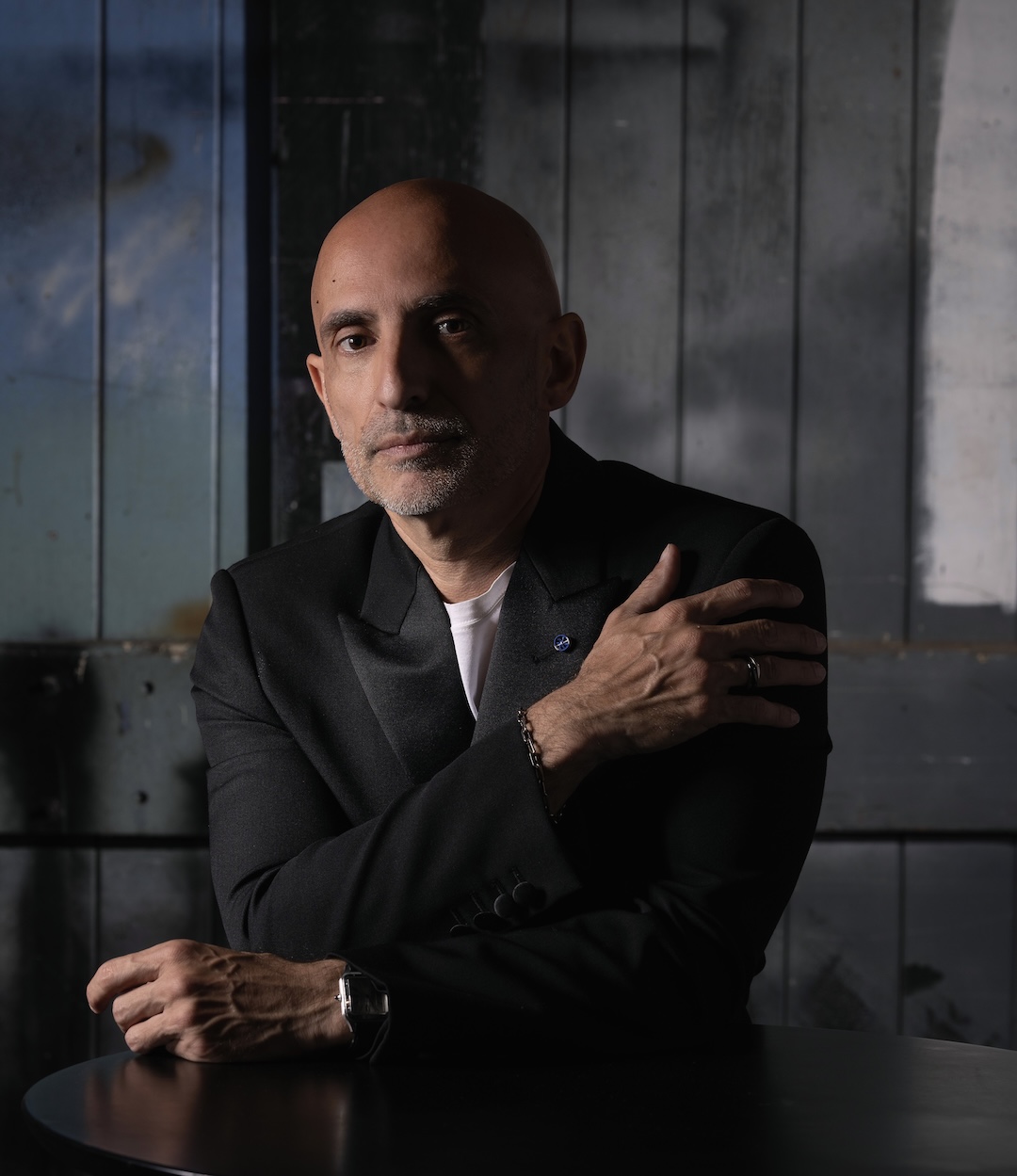
Continuum is described as “a bold exploration of the ever-shifting cadence that binds us to the world.” How did this idea of constant transformation influence your choreographic choices in Continuum?
I’ve curated this evening as an invitation for audiences to experience dance as an ever-evolving conversation—between past and present, between the individual and the collective, and between diverse artistic voices. My intention with this program is to spark connection, curiosity, and reflection, offering works that challenge, move, and inspire while revealing the transformative power of the body in motion.
Each choreographer brings a distinct perspective, yet all share a commitment to exploring the body in motion as a vessel for transformation. Through contrasting aesthetics, cultural resonances, and shifts in time, these works reveal how dance exists on a continuum—where moments build upon one another, find new meanings in fresh contexts, and affirm the enduring power of the human form to express what words cannot.
You’ve created the world premiere Spell within Continuum, which explores “the limits of emotional and physical expression.” What did you aim to conjure emotionally and physically through Spell, and how does it dialogue with the other works in the triple bill?
The title Spell itself suggests a duality—it can be something magical, but also something we fall under without even realising. Emotionally, I want to evoke an atmosphere that is at once intimate and volatile, where vulnerability and power exist side by side. There’s a ritualistic quality to the work, as if the dancers are caught inside a force they cannot quite escape—and it’s that tension which drives the movement and fuels the piece.
Within Continuum, Spell emerges as an intense, visceral heart—both contrasting with and speaking to the other works. While it shares the evening’s theme of transformation, it explores it through a lens of emotional ignition and fearless physicality.
In crafting Continuum, how did you balance moments of intimacy and expansiveness—especially when layering live elements like music and immersive lighting—to evoke that ebb and flow of life’s narratives?
In Continuum, each choreographer works with complete artistic freedom, without any direction from me. That independence brings out authentic contrasts and unexpected connections between the works. It’s this variety that invites audiences to engage on their own terms, discovering personal meanings and emotional threads that are unique to each viewer.
This triple bill seems to offer a journey through time and place—from twilight’s fleeting beauty to elemental breath. How do you want audiences to experience—and perhaps rethink—the relationship between movement, nature, and storytelling?
I always want audiences to come with an open mind and allow the experience to be unprescribed free to discover their own meanings and narratives. Dance has the unique power to be felt as much as it is seen, to resonate physically and emotionally in ways words can’t. I hope audiences leave with a renewed sense of how deeply movement is connected to the natural world, and how it can tell stories without language. Like nature, this evening is always in motion—emerging, transforming, and fading—so that each work becomes a landscape the audience can journey through, sensing their own place in the continuum of life
Looking ahead, does Continuum carve out a new direction or personal milestone for your artistic trajectory? What might this signal for your future choreographic explorations?
Continuum feels like both a culmination and a starting point. It gathers threads from my past work, my fascination with transformation, my love of collaboration, my search for emotional truth and weaves them into something that opens new doors.
Creating and curating this triple bill has changed how I see works interacting—how contrasting voices can strengthen shared themes. It’s inspired me to explore even more fluid boundaries between ideas, styles, and disciplines.
If it signals anything for the future, it’s that I’m interested in going further into that space where dance is not just movement, but an ongoing conversation—between artists, between forms, and between audiences and the world around them.
Continuum runs through November 1 at the Roslyn Packer Theatre.
You may also like.
Inside the $30 Billion Obsession Among the Ultra-Wealthy : A Race to Live Longer
The pursuit of an extended life has become a new asset class for those who already own the jets, the vineyards, and the art collections. The only precious resource left to conquer, it seems, is time.
If you want to know what the latest obsession is these days among the ultra-wealthy, listen in at dinner.
Once it was crypto, then came AI and psychedelics, now it’s longevity all the time. The talk is of biomarkers, NAD+ levels, and methylation clocks, of senolytics and stem cells. Guests compare blood panels like wine lists, and the most important name to drop is no longer your banker or contact at Rolex but your longevity physician. For those just arriving at the conversation, the new science can sound like science fiction—but it’s fast becoming the lingua franca of money.
The field has its own vocabulary—epigenetic reprogramming, which aims to reset cellular clocks; cellular senescence clearance, the removal of “zombie” cells that clog our systems as we age; precision gene therapies, designed to personalise interventions at the level of DNA—that sounds equal parts Brave New World and Wall Street pitch deck. But make no mistake: this is no longer a niche pursuit. The sector is already worth an estimated $30 billion globally and projected to surpass $120 billion within the decade, having attracted billions in investment from the likes of Altos Labs, Juvenescence and Google-backed Calico. Tech titans and old-money families alike are staking claims on the possibility of an extra decade or two. It’s a space where venture funds court Nobel laureates, hedge funds bankroll gene-therapy moonshots, and even wellness festivals in Australia draw rock-star scientists to the stage.
The Poster Child and the Pitch
David Sinclair, the Sydney-born Harvard geneticist who has become something of a poster child for the field, is quick to underline the stakes. “We’re not just talking about lifespan, we’re talking about health span,” he tells Robb Report. “Extending the number of years people live well—without frailty, without disease—isn’t just a medical breakthrough. It’s a social and economic one.” Sinclair, whose research ranges from NAD boosters to epigenetic age-reversal therapies, has calculated that adding a single year of healthy life to the US population, for example, could be worth $38 trillion in economic benefit—fewer years of costly aged care, less burden on hospitals, more years of productivity and compounding returns. In other words, the dividends of health are financial as well as personal. “That’s why governments and investors are paying attention,” he says.
Sinclair has become a fixture on the global circuit, drawing crowds that rival TED or Davos. As Radek Sali, the Australian entrepreneur behind the new Wanderlust Wellspring longevity festival taking place on the Gold Coast this October, where Sinclair is the keynote speaker, puts it: “Wellness has moved into the realm of entertainment.” At Wellspring, platinum-tier guests pay up to nearly $2,000 for the privilege of hearing scientists and investors share the stage over a weekend like headliners at Coachella.
Investing in Time
And then there are the sideshows. Bryan Johnson, the tech mogul turned human guinea pig, makes headlines with his open-source, organ-by-organ data tracking—his infamous “penis readings” have become cocktail-party fodder. While many dismiss him as a parody of the field, his multimillion-dollar project Blueprint has nevertheless made longevity impossible to ignore in the mainstream.
For the uninitiated, the science of longevity today is no longer about vitamin salesmen or fringe dietary regimes. This is the new frontier—one where biology is not just observed but engineered, and where investors smell opportunity on par with space travel. It’s little wonder that Altos Labs has raised billions to chase cellular rejuvenation, or that Juvenescence has secured more than $400 million to fast-track therapies. What was once the realm of eccentric tinkerers now attracts sovereign wealth funds.
“This body takes me to meetings, earns me money—why not invest time and money into it?”
The appeal to the One Percent is obvious. Longevity is a natural extension of portfolio thinking: diversify your assets, hedge your risks, and above all, maximise return on investment. Except in this case, the returns are measured in years of health, energy and cognition. As Andrew Banks, a Sydney-based entrepreneur and early investor in Juvenescence, explains: “This body takes me to meetings, earns me money—why not invest time and money into it?” His Point Piper home teems with contraptions—a Reoxy breathing machine, hydrogen therapy, red-light sauna, and he spends a few hours a day on maintenance, as if his body were a private equity stake.
Banks, like others in his cohort, is baffled that more wealthy men haven’t followed suit. “Entrepreneurs pride themselves on divergent thinking,” he says. “They expand, dream and create businesses with it. But when it comes to their bodies, they’re convergent—unimaginative. The lack of curiosity is astonishing to me.”
Medicine 3.0 and the New Rituals
Steve Grace, a Sydney-based entrepreneur and the proprietor of exclusive private networking club The Pillars, which is opening a longevity program, thinks there is a reckoning coming for those who do not take matters into their own hands. “As someone who has run a few recruitment businesses,” he says, “I can tell you that if you’re a man or woman in your 50s and working as an employee, even in a really good position, it’s time to get worried about job security and being aged out of the workforce. You have to make yourself as vital as possible and become the best version of yourself, or you’re toast.”

What was once fringe has now become a cultural necessity for those who can afford anything, with science finally catching up to ambition. Sinclair’s lab at Harvard recently published a study on the reversibility of cellular ageing—restoring vision in blind mice and setting the stage for human trials in conditions like glaucoma. In Boston, his company Life Biosciences will begin treating patients with blindness in a Phase I trial using partial cellular reprogramming early next year. “This isn’t science fiction anymore,” Sinclair says. “We’re at the point where we can reprogram cells, turn back their biological clocks, and restore function.”
Meanwhile, practitioners like Dr. Adam Brown of the Longevity Institute in the Sydney suburb of Double Bay are reinventing diagnostics. His “assessment menu” has been compared—only half-jokingly—to a Michelin Guide for medical testing: full-body MRI scans, continuous glucose monitors, polygenic risk scores. “What we do is proactive, not reactive,” he says. “Correct deficiencies first, then optimise health. That’s how you get peak performance in the short term and resilience in the long term.” Brown frames longevity in terms that would resonate with any investor: “There’s a short-term ROI—fixing glucose or sleep issues so you perform better tomorrow. And there’s a long-term ROI—functioning in your 70s as you would in your 40s. That’s extending your career, your income potential and your independence.”
“Once upon a time, male vanity meant injectables, veneers and a tan. Today, it’s VO2 max scores and continuous glucose monitor readouts.”
Peter Attia, the Canadian-American physician and podcast host who has helped popularise the concept of “Medicine 3.0”, echoes this emphasis. Medicine 1.0, according to him, was about surviving infections. Medicine 2.0 was about treating chronic disease. Medicine 3.0 is about staying ahead of decline: measuring, monitoring and intervening early. “The goal is not just to avoid disease but to lengthen health span,” Attia has said.
For those already converted, longevity is less about lab science than daily rituals. Sydney-based Chief Brabon, who trains CEOs like athletes, says: “These men are like Formula One cars—you don’t wait until the tyres are bald before swapping them. You keep everything tuned, precise, optimised.”
That tuning now involves more gadgets than ever: hyperbaric oxygen chambers, cryotherapy, sauna/cold-plunge circuits, peptide stacks, nootropics. And yes, a glut of supplements, some with evidence, others little more than wishful thinking. Once upon a time, male vanity meant injectables, veneers and a tan. Today, it’s VO2 max scores and continuous glucose monitor readouts. “Health is the new flex,” as Steve Grace quipped, glancing at his wrist-worn biometric tracker.
The New Flex: Health as the Ultimate Luxury
Still, there is plenty of scepticism. Some therapies are unproven, others prohibitively expensive. And there is the unavoidable fact that many leading scientists, including Sinclair, have stakes in companies producing supplements and therapeutics, raising eyebrows about conflicts of interest. “The difference,” Sinclair insists, “is whether it’s backed by peer-reviewed science and measurable biomarkers. If it can’t be quantified, it’s marketing, not medicine.”
Then there are the contradictions. It promises democratisation while often priced like a private club. It champions science but thrives on hype. It seeks to extend health span but risks deepening class divides. “Only if we let it,” Sinclair says when asked if longevity risks becoming the preserve of the wealthy. “Like antibiotics or aspirin, these advances should become widely available and affordable once they scale.” Sali agrees, but from another angle: “Biohacking doesn’t have to be expensive,” he says. “The blue zones prove that—community, diet, movement, purpose. Those are free. Wellspring is about making that knowledge accessible.”
And yet, for all its shortcomings, the movement is here to stay. Investment continues to pour in. Technology—like senolytic drugs that clear aged cells or AI-driven platforms that predict individual disease risk years in advance—is moving from speculation to clinical trial. Scientists are being recast as influencers. And the wealthy, always in search of the next advantage, have found in longevity a pursuit as old as alchemy, yet dressed in the language of venture capital. The truth is that health has always been an asset. What’s new is that it’s now being traded, optimised and measured like one.
In the end, longevity is less about a moonshot than about curiosity. Banks, Sali, Sinclair, Attia are all, in their own way, betting on time. Perhaps the most radical idea is also the simplest: that the best-performing asset in any portfolio is the body itself. Unlike Bitcoin, it carries you to meetings. Unlike art, it cannot be stored in a vault. Unlike real estate, it is non-transferable.
The new calculus of longevity is the recognition that the ultimate luxury is not wealth or status, but a few more decades of clear thought, strong bones and good company—and the ability to make money off it. Everything else, as one investor put it, is just a rounding error.
You may also like.
How Sailing Shaped Loro Piana’s Most Iconic Designs
Pier Luigi Loro Piana grew his family textile business into a celebrated fashion house by following his passion for sports on land and at sea.
The Regatta Connection
The race village at Port de Saint-Tropez is awash with people in nautical navy and white, the de facto dress code for the Loro Piana Giraglia regatta. This is the second year the fashion house has lent its name to one of the Mediterranean’s most prestigious summer races. The course zooms from the French coast to Genoa, Italy, taking a sharp turn past Giraglia, a small island off Corsica’s northern tip. It’s the latest in a long line of marine events the brand has sponsored, dating back more than 20 years.
The link between sailing and the brand—and more consequentially the Loro Piana family—is exemplified by the man Robb Report is here to meet: Pier Luigi Loro Piana. An avuncular figure in his 70s with the physique of a man who has enjoyed life, Pier Luigi fell in love with sailing in his late teens, when a family friend took him for a cruise in a sloop.
“Using the wind to go faster or slower, driving the boat like it has an engine, it’s really fascinating,” he says. Inevitably, he started competing. “When you’re sailing, you’re always looking for other boats to go and fight with. It’s an instinct,” he says. And then, with considerable understatement, “I think it’s a nice hobby.”
A Life Under Sail
He currently owns two boats: My Song, which you can see on these pages, is a 25 m sailing yacht that competed in the Regatta. There’s also Masquenada, a comfortable 50 m explorer. It’s a commendable set-up befitting a man who shaped one of Europe’s most celebrated fashion houses.
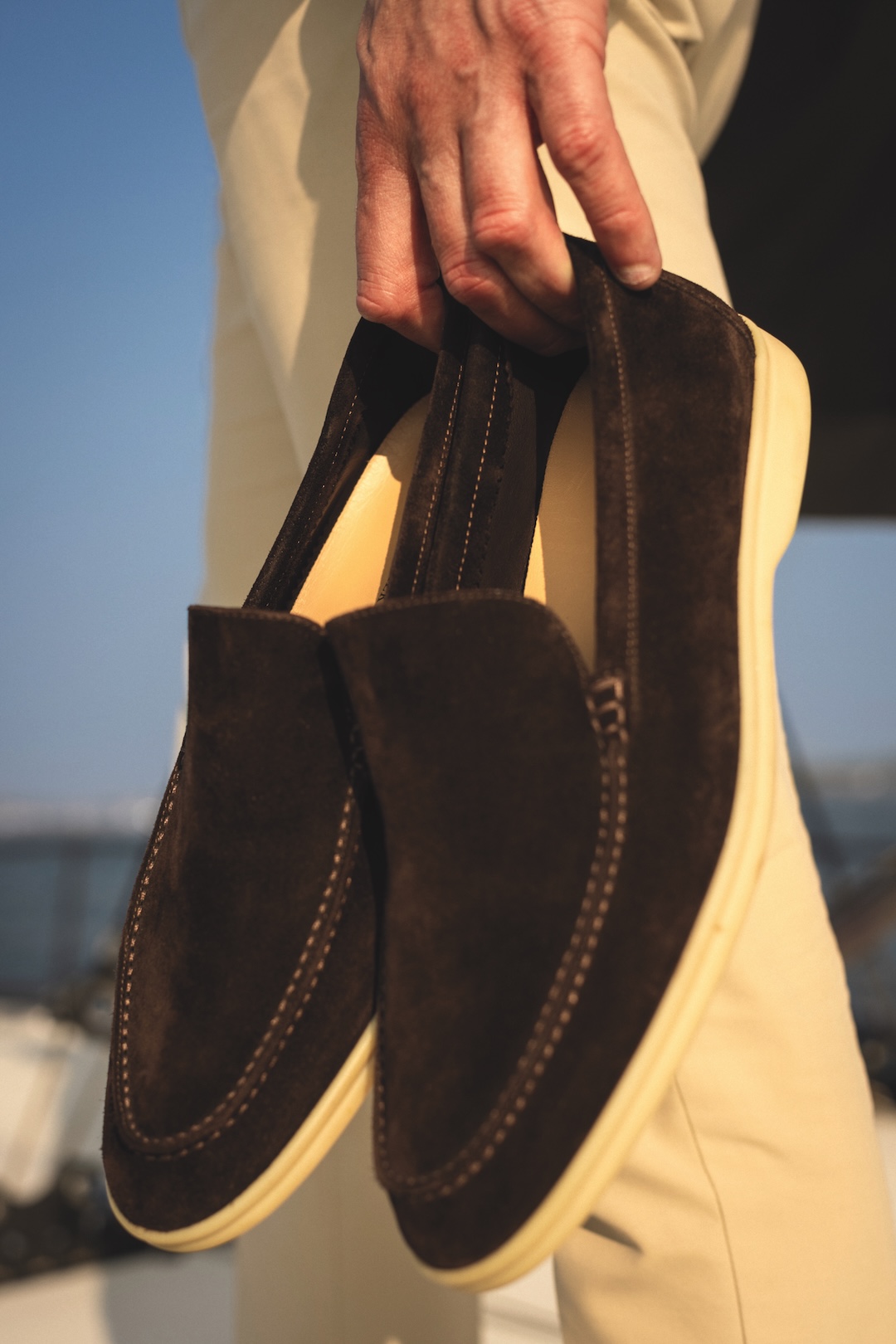
A Family Business Turned Global Powerhouse
The textile and clothing company that bears his family’s name was launched by an ancestor, Pietro Loro Piana, in 1924. A few generations later, Pier Luigi and his brother, Sergio, would run it for four decades until LVMH acquired a majority stake for around $4 billion in 2013. Sergio passed away that year; his widow and Pier Luigi still own a share of the brand between them.
The brothers proved innovative custodians, moving the company upmarket with an insistence on ultra-fine materials and groundbreaking fabrications. And the connection with sports—specifically yachting, horseback riding, skiing and golf—is integral to how the brand positions itself. As Pier Luigi recalls, such associations often had self-serving origins.
“These are the sports my brother and myself were doing,” he says. “We were very committed in business in the 1970s, ’80s, ’90s, so we were like our customers: people that like to work hard but also play hard. And that meant sports.”
Innovation Born of Necessity
This affinity often led them to develop durable, yet elegant, materials and gear for their off-duty pursuits, eventually offering versions to their athletic clientele. “We engineered products with unusual properties, natural fibres like wool or cashmere with a membrane that makes it waterproof and windproof… For research and development, I was the first victim,” he says with a chuckle. Once, he wanted a ski jacket that was “warmer, lighter, softer and better” than nylon models, so he made a prototype to test on the slopes. It gave birth to the Loro Piana Storm System, launched in 1994. The line’s wind-resistant waterproof wool and cashmere has since been used by brands around the world. “I still have this jacket,” he says.
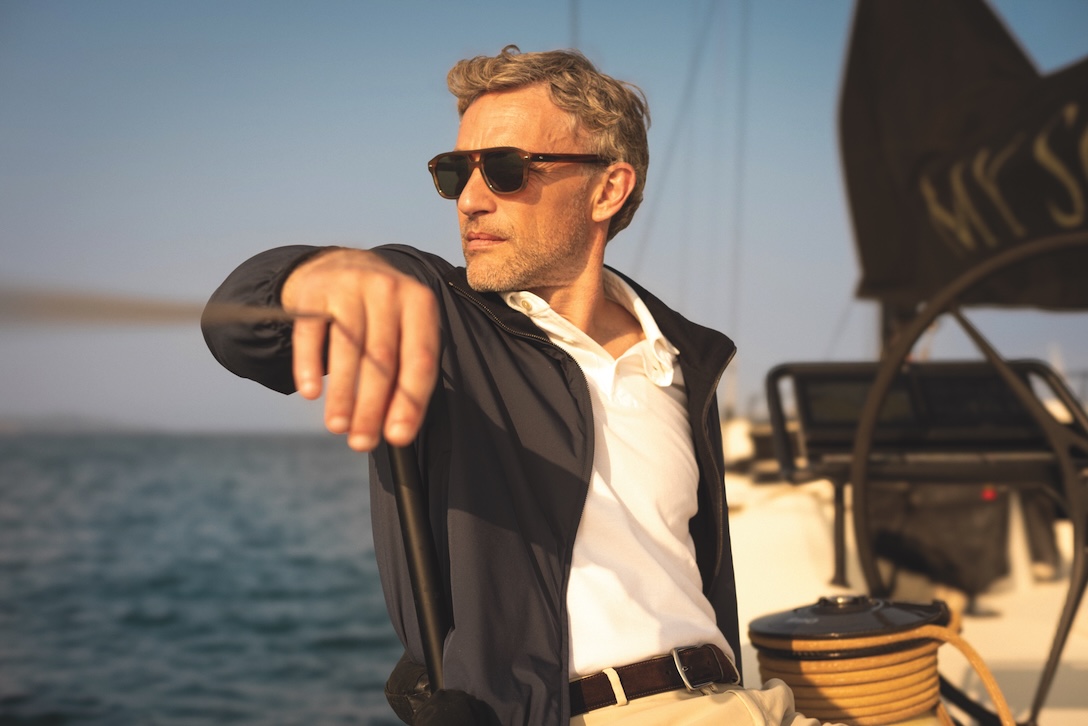
The same process happened on the water. A beloved reversible bomber, with knitted cashmere on one side and waterproof polyester on the other, was born from Pier Luigi’s need for a functional jacket to wear on his yacht. “It’s very light, doesn’t wrinkle, it’s warm, windproof,” he says. “It solves so many problems.”
He takes less credit for perhaps the brand’s most famous—and almost certainly most imitated—product, the white-soled suede Summer Walk loafers. “That was my brother,” he says. “When we were 20, 30 years old, we went sailing and there were only [Sperry] Top-Siders or Sebagos. But when the soles got worn, they got hard and slippery.”
The answer: a non-marking sole with grip—“like a tire you use in Formula 1 when it’s wet”—which Sergio got his bespoke shoemaker to sew to suede uppers. Eventually, they produced two versions: a loafer and the Open Walk, a model with a slightly higher top. “We discovered people were using them also for formal wear because they were so comfortable,” says Pier Luigi. “It’s really a successful story that started from product research.”
And if problem-solving can turn your family business into a giant of global style, clearly it pays to be a little selfish.
You may also like.
The Supercar of Pool Tables
In a rare fusion of Italian design pedigree and artisanal craftsmanship, Pininfarina and Brandt have reframed the barroom game as aerodynamic high art.
In the rarefied realm where leisure meets design, the latest object of desire doesn’t purr down the autostrada—it commands the room from a single sculptural base. The Vici pool table, a collaboration between Italian automotive legend Pininfarina and Miami’s bespoke table-maker Brandt Design Studio, reimagines the game with the same aerodynamic poise and artisanal precision that have graced some of the world’s most beautiful vehicles.
Named for Julius Caesar’s immortal boast—“Veni, vidi, vici”—this limited-edition series transforms billiards from casual diversion into a declaration of style. Every curve is deliberate, from the ultra-thin playing surface clad in tournament-grade Simonis cloth to the seamless integration of Italian nubuck leather and precision-milled metals. The effect is more haute sculpture than barroom pastime—yet it meets exacting professional standards.
For the true connoisseur, the debut PF 95 Anniversario edition celebrates Pininfarina’s 95-year legacy in just 95 numbered pieces. Finished in dark-blue lacquer with rose-gold accents and a flash of red felt, each table is discreetly nameplated—a tangible claim to an heirloom in the making.
“It’s not just about how it plays—it’s about how it lives in a space,” says Dan Brandt, the master craftsman whose work has long graced the world’s most exclusive interiors. Whether anchoring a penthouse salon, a members’ lounge or the main deck of a superyacht, the Vici is designed to stir conversation before the first break.
For those accustomed to Pininfarina’s sleek automotive silhouettes, this is a chance to bring that same lineage of movement, form and Italian refinement into the home. Only now, the horsepower is measured not in engines—but in the geometry of a perfect shot.
From pool to midcentury to Ottoman, we’ve got all the table angles covered at Robb Report Australia & New Zealand —plus more home-worthy pieces.
You may also like.
23/10/2025
05/09/2025






